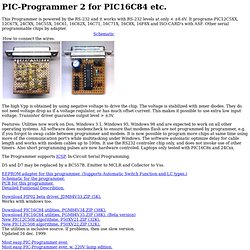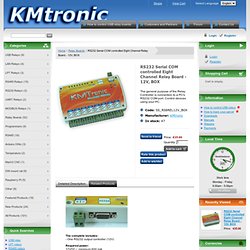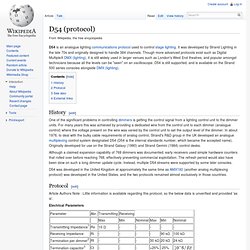

PIC Programmer 2, 16C84, 12C508 etc. This Programmer is powered by the RS-232 and it works with RS-232 levels at only < ±8.6V.

It programs PIC12C5XX, 12C67X, 24CXX, 16C55X, 16C61, 16C62X, 16C71, 16C71X, 16C8X, 16F8X and ISO-CARD's with ASF. Other serial programmable chips by adapter. The high Vpp is obtained by using negative voltage to drive the chip. The voltage is stabilized with zener diodes. They do not need voltage drop as if a voltage regulator, or has much offset current. Features: Utilities now work on Dos, Windows 3.1, Windows 95, Windows 98 and are expected to work on all other operating systems. The Programmer supports ICSP, In-Circuit Serial Programming.
D5 and D7 may be replaced by a BC557B. EEPROM adapter for this programmer. Download PIP02 beta driver, JDM84V33.ZIP (5K). Download PIC16C84 utilities, PGM84V34.ZIP (38K).Download PIC16C84 utilities, PGM84V35.ZIP (38K). Composants électroniques. TrocElec - Top annonces. PIC Microcontroller Tutorial - LED Blink. Pearltrees. Programmable Thermostat, Light Dimmer System. Not sure if this is the place to post these questions, but it seemed the best to me.

I have two separate things I'd like to do with the Arduino that I need a little help figuring out... The first is a programmable and computer-controllable thermostat. I have a few issues here. First, I need the thermostat to keep a day/hour/minute clock and I'm not sure about the best way to do that. Second, I'm guessing I'll be using relays to control the signals sent to the HVAC units. Photocoupleur. Un article de Wikipédia, l'encyclopédie libre.

Opto-Isolated 8 Channel Relay Board(Price reduced again) KMtronic LTD: USB Eight Channel Relay Controller - RS232 Serial controlled - 12V. The complete includes: - One RS232 output controller (12V) Required power: 12VDC / minimum 600 mA.

Souder des composants de surface. Jusqu’à maintenant, à la maison quand on faisait de la soudure de cartes électroniques, on soudait des composants dits traversant (through hole in english).

Prenons en exemple une résistance classique, ça possède deux pattes, que l’on insère dans deux petits trous, et que l’on vient souder par en dessous: Mais avec la miniaturisation de tous les composants électronique, de plus en plus de composants ne sont plus disponibles dans ce format. On les trouve désormais en version composant de surface. En gros cela veut dire que l’on soude du même coté où l’on pose le composant. Il y a pas mal d’avantage à cela, la taille des cartes peuvent être réduite, les techniques industrielles en sont facilités (on pose les composant sur une plaque on la passe au four et hop tout est soudé…). Semiconductor relays. Copyright 1997,1998,1999 Tomi Engdahl This document tries to collect information about semiconductor relays and semiconductor relay circuit to one document which would be useful to electronics professionals and hobbyist.
This document is a collection of information from various sources and I have not been able to verify all information. Be aware that there might be errors in the schematics. NOTE: This information is provided as a guideline only. All efforts have been made to ensure it is correct, but it is the responsibility of the user to verify the data is correct for their application. Index. La solution pour développer votre micro-entreprise. Simplifiez-vous la gestion de votre entreprise avec entreprise-facile.com Que vous lanciez votre activité ou que vous gériez une entreprise déjà bien implantée, il est primordial de faire un suivi rigoureux de votre activité.

Notre partenaire entreprise-facile.com, éditeur d’applications web et mobile de facturation et de gestion d’entreprise vous propose toute une gamme d’outils simples et pratiques pour assurer ce suivi. Notre partenaire entreprise-facile.com. Lamp / Light Control Circuits. TRIAC Light Dimmer. Adjustable Strobe Light. D54 (protocol) One of the significant problems in controlling dimmers is getting the control signal from a lighting control unit to the dimmer units.

For many years this was achieved by providing a dedicated wire from the control unit to each dimmer (analogue control) where the voltage present on the wire was varied by the control unit to set the output level of the dimmer. In about 1976, to deal with the bulky cable requirements of analog control, Strand's R&D group in the UK developed an analogue multiplexing control system designated D54 (D54 is the internal standards number, which became the accepted name). DIY 4-6 light controller for under $80. Found this on the net after my third timer/powerstrip meltdown.

I've made several already, they are easy to put together and work great. How to Build a Four Light Grow Light Controller for Less Than $80 Anyone that has more than two 1000 watt lights in their home has probably run into the problem of how to supply power and turn them on and off. A standard 120 volt circuit in your home has a 15 amp rating, that means one light. Note: I will be using the term "120 volt" and "240 volt" to describe the two different types of circuits we will be working with only because that's the term the ballast manufactures use.